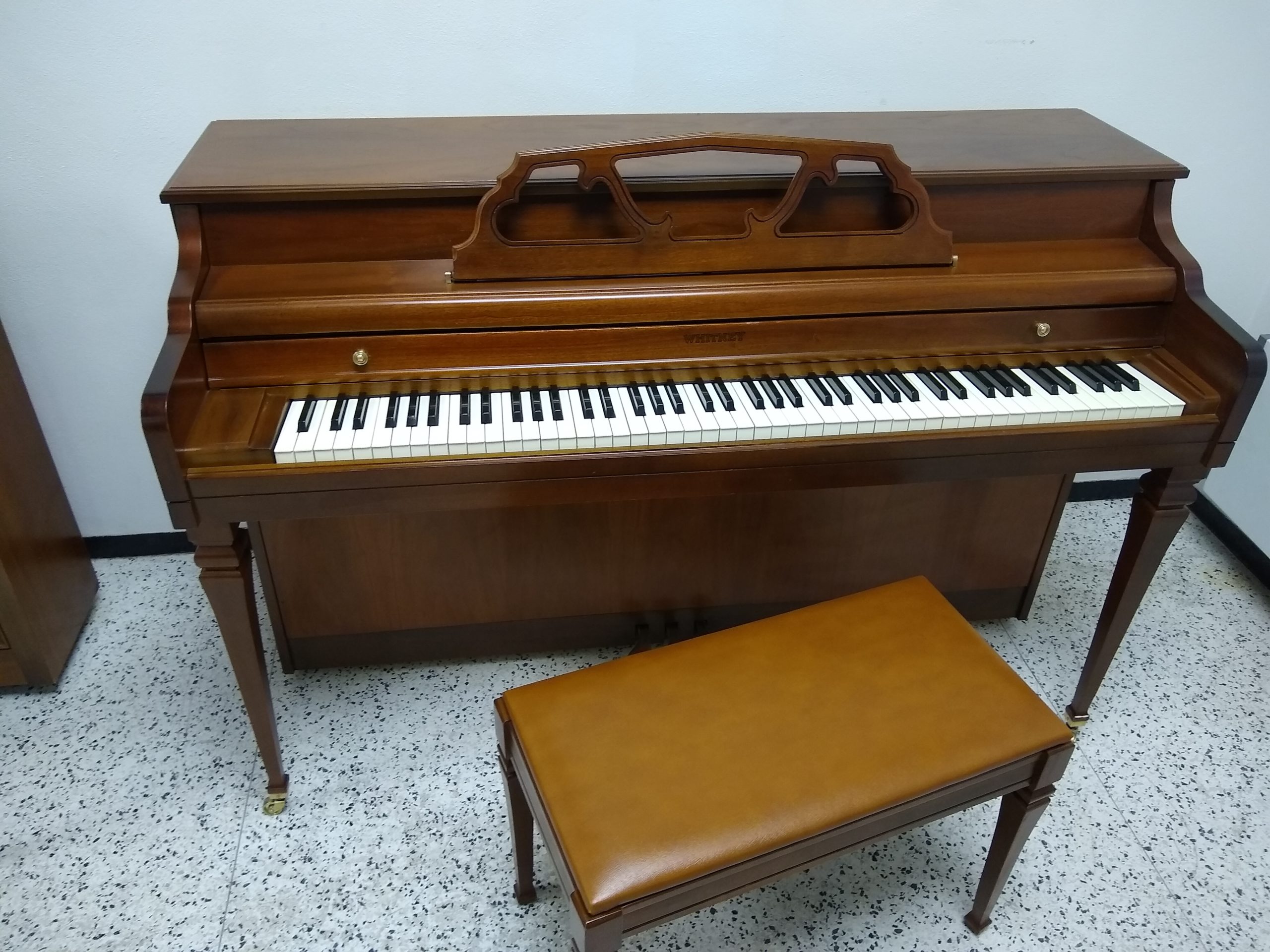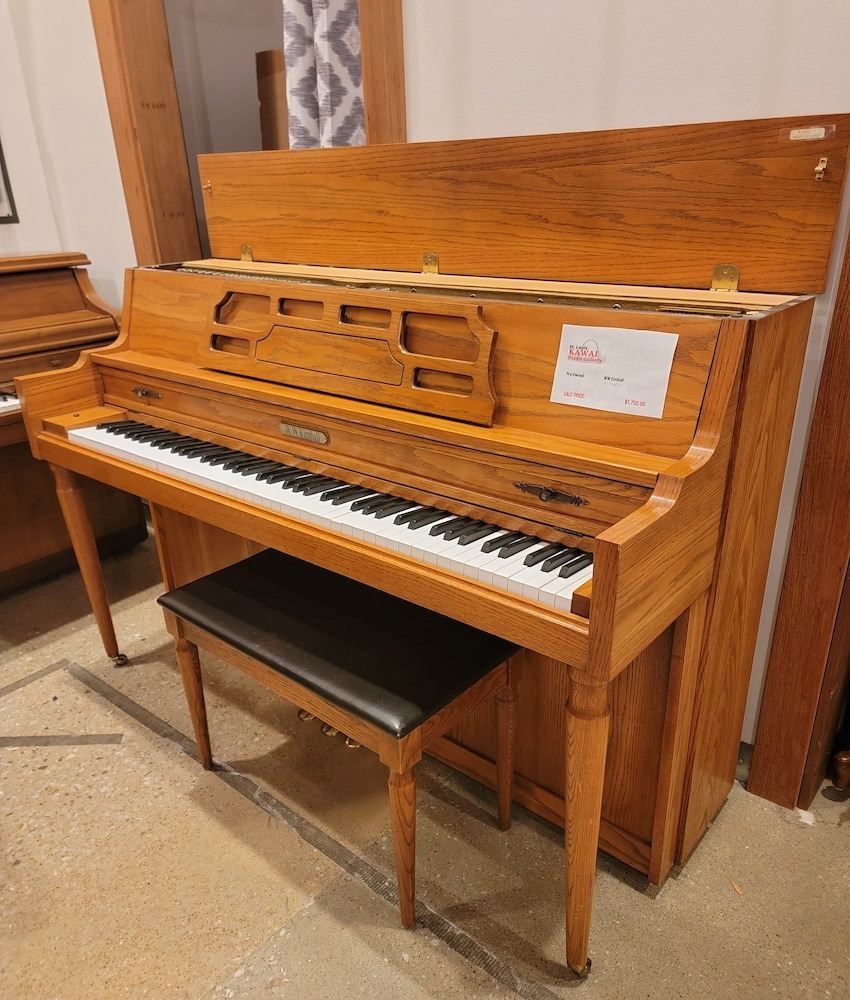A used Kimball piano typically sells between $500 to $2,500. Prices vary depending on the piano’s condition, model, and age.
Kimball pianos have woven their melodies into homes for over a century, standing as a testament to American piano craftsmanship. Founded in 1857, Kimball International launched its piano division by the 1880s and soon became one of the largest piano manufacturers in the world.
Pianists ranging from beginners to seasoned professionals have appreciated the brand for its affordability and reliable quality. With a diverse catalog that includes grand, upright, and console models, Kimball pianos cater to a broad audience. As vintage instruments, they often carry a touch of nostalgia, adding sentimental value to their tangible worth. When shopping for a Kimball piano, factors such as the instrument’s maintenance history, aesthetic condition, sound quality, and market demand play significant roles in determining its price.
The Legacy Of Kimball Pianos
Kimball pianos carry a rich heritage of American music history. From homes to concert halls, these instruments have offered melodious experiences since the 19th century. Many musicians treasure Kimball pianos for their distinctive sound and craftsmanship. Understanding the value of a Kimball piano involves diving into its history and unique characteristics.
Origins And History
The story of Kimball pianos begins in 1857 with W.W. Kimball. What started as a humble piano dealership in Chicago, Illinois, transformed into a massive piano manufacturing empire. By the 20th century, they became one of the largest piano companies in the world. Kimball pianos saw peaks of popularity, partly due to their affordability and quality. Despite ceasing production in the 1990s, their pianos are still played and loved today.
Prominent Features
Kimball pianos stand out for various reasons. Not just any piano, a Kimball represents artistry and engineering combined. Some of their most notable features include:
- Quality Woodwork: Made with fine woods, they offer a warm, resonant sound.
- Variety: From grand pianos to uprights, there’s a Kimball for every musician.
- Durability: These pianos are known for standing the test of time.
Each piano has a unique serial number, aiding in the identification and appraisal process.

Credit: kawaipianostlouis.com
Factors Influencing Kimball Piano Values
Understanding the value of a Kimball piano involves many factors. Three main aspects can significantly affect price. Look at age, model, and market demand to gauge a Kimball piano’s value. Here’s what to consider:
Age And Condition
The age of a Kimball piano plays a crucial role in its value. Older pianos can be worth more if they’re well-maintained. However, a piano that’s too old could need costly repairs. Condition matters as much as age. A piano in excellent condition, with a shiny finish and working parts, is more valuable. Look for these points when checking a piano’s condition:
- Exterior Finish: Check for scratches or dents.
- Keys: Make sure they are intact and responsive.
- Sound Quality: Listen for rich, clear tones.
- Mechanical Issues: Confirm that all internal mechanisms work properly.
Model And Size
The specific model and size of a Kimball piano are vital factors. Larger models, like grand pianos, often fetch higher prices than uprights, due to their sound quality and aesthetic appeal. Special editions or models with rare wood finishes can also be more valuable.
Consider the following table for a quick model comparison:
| Model Type | Typical Size | Price Range |
|---|---|---|
| Upright | 3-5 feet | Lower |
| Grand | 5-9 feet | Higher |
Market Demand
Market demand can make a huge difference in a piano’s value. Certain Kimball piano models are more sought-after, potentially driving up prices. The current piano market also fluctuates based on trends and the economy. Finding a buyer who appreciates the unique qualities of a Kimball piano could lead to a better price.
Assessing Your Kimball Piano
Want to know the value of your Kimball piano? Assessing your instrument is key to understanding its worth. Dig into its history and condition, and uncover the hidden value that your Kimball piano holds.
Identifying Model And Serial Number
Start by finding your piano’s identity. The model and serial number act as its unique fingerprint. These details will guide you through its age and background. Here’s how to pinpoint them:
- Check the inside of your piano; the number might be there.
- Look behind the piano for a stamped or printed number.
- The model name often sits above the keys or on the inner plate.
Write these numbers down. They are vital for valuation.
Evaluating Cosmetic And Mechanical Condition
Inspect your piano’s appearance and function. Both impact its value greatly:
| Cosmetic Condition | What to Look For |
|---|---|
| Exterior | Scratches, chips, or fading |
| Keys | Discoloration or damage |
| Bench | Stability and wear |
Next, gauge the mechanical condition.
- Play each key and listen for consistent sound.
- Test the pedals for proper operation.
- Open the piano and inspect the strings and hammers.
If parts need repairs, this can lower the piano’s value. Keep notes on what you find.

Credit: jimlaabsmusicstore.com
Price Ranges For Kimball Pianos
Buying a piano can be a big investment, and the cost often plays a significant role in the decision-making process. Kimball Pianos are known for their quality and affordability, offering a range of prices to fit various budgets. Let’s explore the price ranges you can expect when considering a Kimball piano for your musical endeavors.
Upright Pianos
Kimball upright pianos are a popular choice for those with limited space. These pianos combine quality sound and craftsmanship at a cost-effective price.
- Used models: $500 – $2,500
- Refurbished models: $2,500 – $4,000
Note that prices can vary based on condition, age, and seller. It’s vital to consult with a reputable dealer or technician to ensure a fair deal.
Grand Pianos
Kimball grand pianos offer a majestic sound and are often a centerpiece in any room they occupy. The price for these grands reflects their larger size and the intricate craftsmanship involved.
- Smaller models (Baby Grands): $3,500 – $7,000
- Larger models: $7,000 – $10,000
Remember, grand pianos are significant investments. Thorough research and professional advice can help ensure you get a quality instrument.
Maximizing Your Kimball’s Resale Value
Thinking of selling your Kimball piano? A well-maintained piano can fetch a far better price. Maximizing your Kimball’s resale value is crucial. Follow these strategies to enhance its appeal to potential buyers.
Regular Maintenance Tips
Regular care keeps your piano in top shape and ups its market value. Here’s how you can keep your Kimball piano sounding great:
- Tune it once every six months
- Keep it in a stable environment to prevent wood warping
- Clean the keys with a gentle cloth
- Polish the wood carefully to maintain its luster
Finding The Right Buyer
Target the perfect market for your Kimball. Music schools, churches, and piano enthusiasts often seek quality instruments.
| Market | Benefits |
|---|---|
| Music Schools | Value educational tools |
| Churches | Seek instruments for services |
| Collectors | Look for unique pieces |
| Hobbyists | Desire quality sounds |
Create a compelling ad. Highlight your piano’s best features. Include high-quality images to attract serious buyers.
Alternatives To Selling
When considering the worth of a Kimball piano, remember selling isn’t the only option. Donation and recycling or transforming it into art could be worthy alternatives. These choices can provide cultural value, support the community, or renew the piano in creative ways. Let’s dive into these possibilities.
Donation And Recycling
Donating a Kimball piano could help those in need. Music schools, churches, and community centers often appreciate such gifts. You can offer the gift of music to others. This act can often serve as a tax deduction.
- Charities: Look for local charities that accept pianos.
- Non-profits: Schools and art programs may need pianos.
- Recycling: Some parts of pianos can be recycled for other uses.
Recycling is also an eco-friendly choice. Metal strings, wooden parts, and ivory keys can find new life. Contact local recycling centers to discover options. Remember, some might even pick up your piano for free.
Transforming Into Art
Consider turning your Kimball piano into a piece of art. Many artists and DIY enthusiasts look for unique items to repurpose. Pianos can become stunning art projects.
- Bookshelves: Convert the body of the piano into a unique bookshelf.
- Desks: The keyboard section can serve as a creative desk space.
- Bars: Transform the frame into a custom bar for entertaining guests.
A piano turned art piece can become the centerpiece of a room. It showcases creativity and preserves memories. Consider these alternatives to honor the spirit of the instrument.

Credit: kawaipianostlouis.com
What is the Price Range for Kimball Pianos Compared to Used Upright Pianos?
When comparing the price range for Kimball pianos to used upright pianos pricing, it can vary significantly based on factors such as condition, age, and location. Generally, Kimball pianos tend to be priced higher than used upright pianos, but the final cost will depend on individual circumstances.
Frequently Asked Questions On How Much Is A Kimball Piano
Is Kimball A Good Brand Of Piano?
Kimball pianos are considered a reputable brand, known for manufacturing quality mid-level pianos with a rich history in American piano production. They offer good value for casual players and those on a budget.
What Old Pianos Are Worth Money?
Antique pianos from reputable manufacturers like Steinway, Bosendorfer, and Bechstein, especially those in good condition or with historical significance, can be highly valuable. Rare models and those with ornate designs often fetch higher prices.
When Was The Last Kimball Piano Made?
The last Kimball piano was manufactured in 1996, marking the end of the company’s piano production era.
How Do You Identify A Kimball Piano?
To identify a Kimball piano, check for a serial number inside, usually near the tuning pins. Also, look for the “Kimball” brand name on the front.
Conclusion
Determining the value of a Kimball piano hinges on several factors, from condition to model year. Your quest to find the right price can involve appraisals and market research. Remember, whether a prized heirloom or a new acquisition, its musical charm is timeless.
Embrace the journey to discover what your Kimball is truly worth.
{ “@context”: “https://schema.org”, “@type”: “FAQPage”, “mainEntity”: [ { “@type”: “Question”, “name”: “Is Kimball a good brand of piano?”, “acceptedAnswer”: { “@type”: “Answer”, “text”: “Kimball pianos are considered a reputable brand, known for manufacturing quality mid-level pianos with a rich history in American piano production. They offer good value for casual players and those on a budget.” } } , { “@type”: “Question”, “name”: “What old pianos are worth money?”, “acceptedAnswer”: { “@type”: “Answer”, “text”: “Antique pianos from reputable manufacturers like Steinway, Bosendorfer, and Bechstein, especially those in good condition or with historical significance, can be highly valuable. Rare models and those with ornate designs often fetch higher prices.” } } , { “@type”: “Question”, “name”: “When was the last Kimball piano made?”, “acceptedAnswer”: { “@type”: “Answer”, “text”: “The last Kimball piano was manufactured in 1996, marking the end of the company’s piano production era.” } } , { “@type”: “Question”, “name”: “How do you identify a Kimball piano?”, “acceptedAnswer”: { “@type”: “Answer”, “text”: “To identify a Kimball piano, check for a serial number inside, usually near the tuning pins. Also, look for the \”Kimball\” brand name on the front.” } } ] }